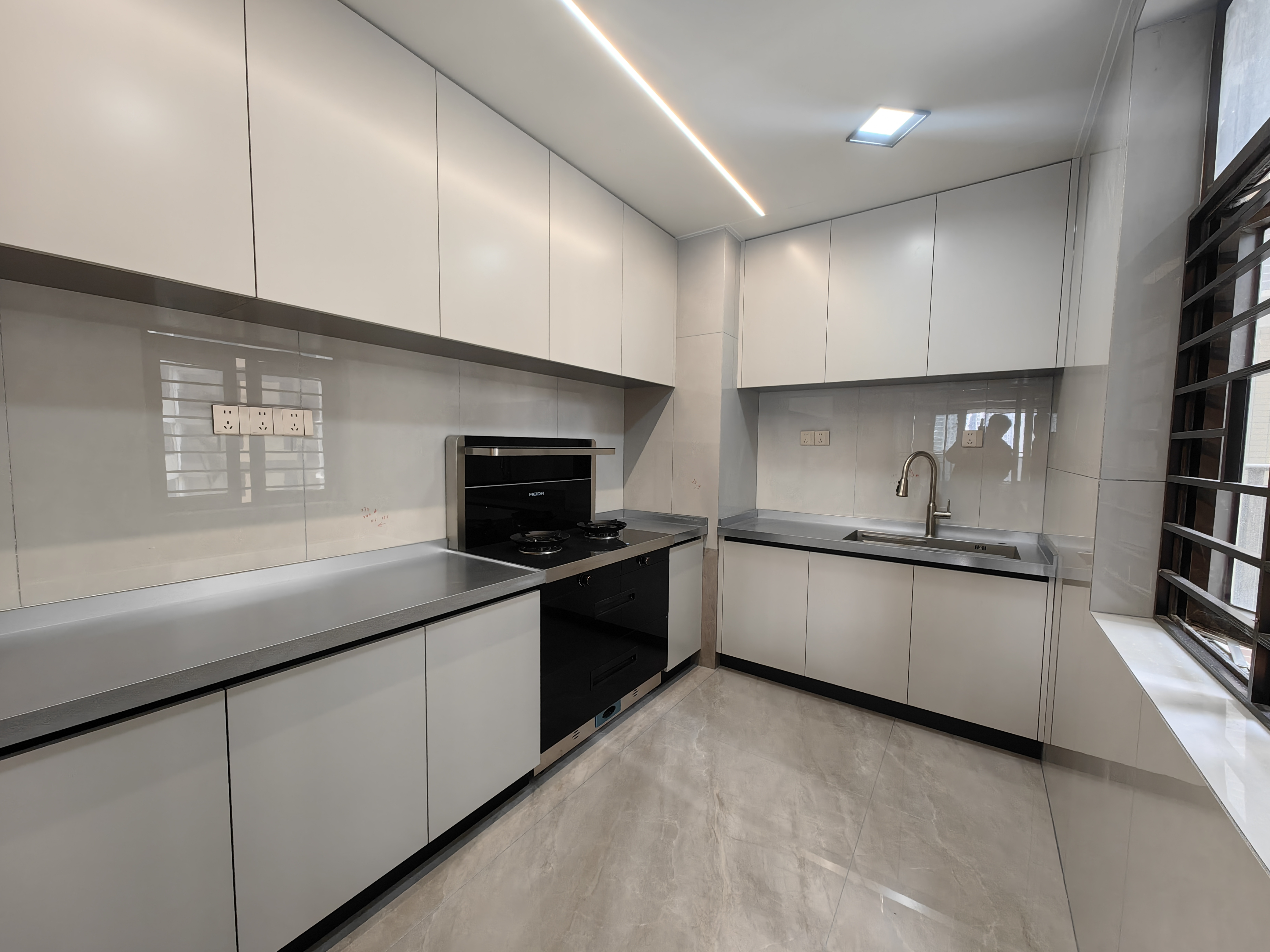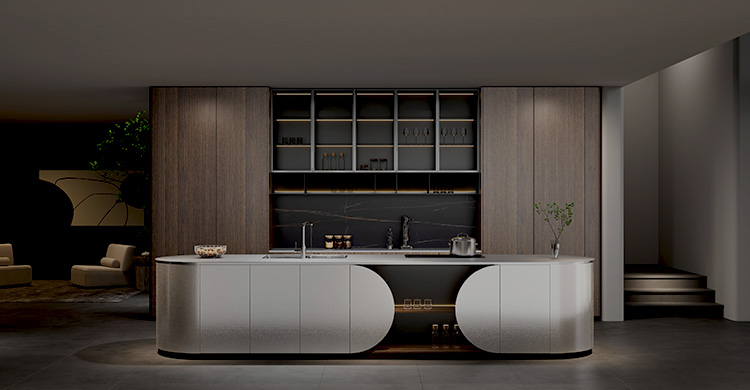The Chinese Stainless Steel Cabinet Industry: Industrial Transformation and Future Prospects under Consumption Upgrade
In recent years, with the advancement of consumption upgrade and the deepening of environmental awareness, the Chinese home furnishing and building materials industry has undergone structural changes. Among them, stainless steel cabinets, as a substitute for traditional wooden cabinets, are rising at an annual growth rate of over 15%, becoming a new growth engine in the kitchen economy. From the early industrial style to today's high-end customization, the development trajectory of this niche sector reflects the deep logic of China's manufacturing transformation towards intelligence and greenification.

一、Dual Drivers of Environmental Necessity and Health-Conscious Consumption
Against the backdrop of the "Dual Carbon" goals and increasing concerns over indoor air pollution, the environmental attributes of stainless steel cabinets have become a core selling point. Compared to traditional panel cabinets, their zero formaldehyde emission, waterproof and moisture-proof properties, and antibacterial and corrosion-resistant features precisely meet consumers' demand for a healthy kitchen. According to the 2023 China Kitchen Health Consumption White Paper, 76% of respondents listed environmental performance as the primary criterion for cabinet selection, directly driving the penetration rate of stainless steel cabinets in first- and second-tier cities to over 30%.
On the policy front, the introduction of documents such as the Green Building Materials Product Certification Implementation Plan has accelerated the industry's standardization process. Leading companies like Oppein and Golden Home have been actively expanding their stainless steel product lines, incorporating technologies such as food-grade 304 stainless steel and nano-antibacterial coatings to build differentiated competitive barriers. Notably, the lagging effect of consumption upgrades in third- and fourth-tier cities is becoming apparent, making these markets a key growth engine for the industry over the next three years.
二、Intelligent Manufacturing Reconstructs Production Paradigms
The traditional cabinet industry has long been plagued by the contradiction between non-standard customization and production efficiency. However, the industrial nature of stainless steel cabinets makes them more conducive to intelligent manufacturing transformation. Currently, the industry is witnessing two major technological trends:
Modular Design Revolution: By establishing a standardized component library, the industry enables free combination of cabinet bodies, countertops, and hardware, reducing the customization delivery cycle from 30 days to 7 days.
Digital Factory Upgrades: The application of technologies such as laser cutting, robotic welding, and AI quality inspection has increased material utilization to over 95%, with welding precision reaching 0.1mm. For example, ZBOM's intelligent production line can achieve flexible production of 500 cabinet sets per day.
This production model innovation not only reduces comprehensive costs by 15%-20% but also drives the industry's transition from labor-intensive to technology-intensive. According to data from the Ministry of Industry and Information Technology, the penetration rate of intelligent manufacturing in the cabinet industry reached 41% in 2022, with stainless steel products contributing significantly to this growth.
三、Scenario-Based Innovation Unlocks Value Potential
On the consumer side, stainless steel cabinets are breaking through the stereotype of "commercial kitchens" and capturing the high-end market through design innovations:
Aesthetic Evolution: The application of matte brushed, colorful laminating and rock plate splicing breaks the coldness of the metal material.For instance, Piano's "Golden Years" series combines stainless steel with solid wood elements, with single sets priced over 100,000 yuan.
Functional Integration: Designs such as embedded appliances, intelligent lighting systems, and sensor-based storage are transforming cabinets into smart home hubs. Haier Smart Home's IoT-enabled cabinets, for example, can control humidity and manage ingredients via voice commands.
Space Reconfiguration: The popularity of open kitchens has spurred the trend of integrated island designs, with stainless steel being the preferred material for islands due to its load-bearing strength and ease of cleaning, driving a 40% increase in average customer spending.
四、Cross-Border Competition and Industry Chain Integration
The rapid development of the industry has attracted multiple players:
Home Appliance Giants Crossing Over: Companies like Midea and Fotile are leveraging their kitchen appliance channels to offer "appliance + cabinet" package deals, creating a closed-loop kitchen ecosystem.
Material Suppliers Expanding: Upstream companies such as Baosteel and TISCO are directly entering the end market by establishing custom home furnishing divisions.
Renovation Companies' Channel Reforms: Full-service renovation companies are incorporating stainless steel cabinets into their main material packages through strategic partnerships, forcing manufacturers to establish engineering channel service systems.
This cross-border competition has accelerated vertical integration within the industry chain.At present, from the cold rolled steel plate production to the surface treatment process, and then to the intelligent hardware supporting the formation of the Pearl River Delta, Yangtze River Delta, two major industrial clusters, more than 200 enterprises above the scale of the industry concentration CR10 reached 58%.
五、Challenges and Future Outlook
Despite the promising prospects, the industry still faces multiple challenges: fluctuating raw material prices pressuring profits, consumer biases against metal materials, and price wars triggered by homogeneous competition. The key to breaking through lies in:
Technological Breakthroughs: Developing lightweight honeycomb aluminum composite technology to address the weight issue of stainless steel cabinets.
Experience Upgrades: Enhancing consumer decision-making through tools like VR virtual kitchens and AI design software.
Service Extensions: Establishing full life cycle service systems, offering regular maintenance and trade-in services.
Over the next five years, with the advancement of policies promoting finished housing and the release of demand for existing home renovations, the market size of stainless steel cabinets is expected to exceed 60 billion yuan. Companies that can build technological moats in areas such as material science, intelligent interaction, and sustainable design will dominate the final stage of this kitchen revolution. Under the guidance of the "Manufacturing Power" strategy, this once niche category is now writing a vivid sample of China's intelligent manufacturing transformation and upgrade.




